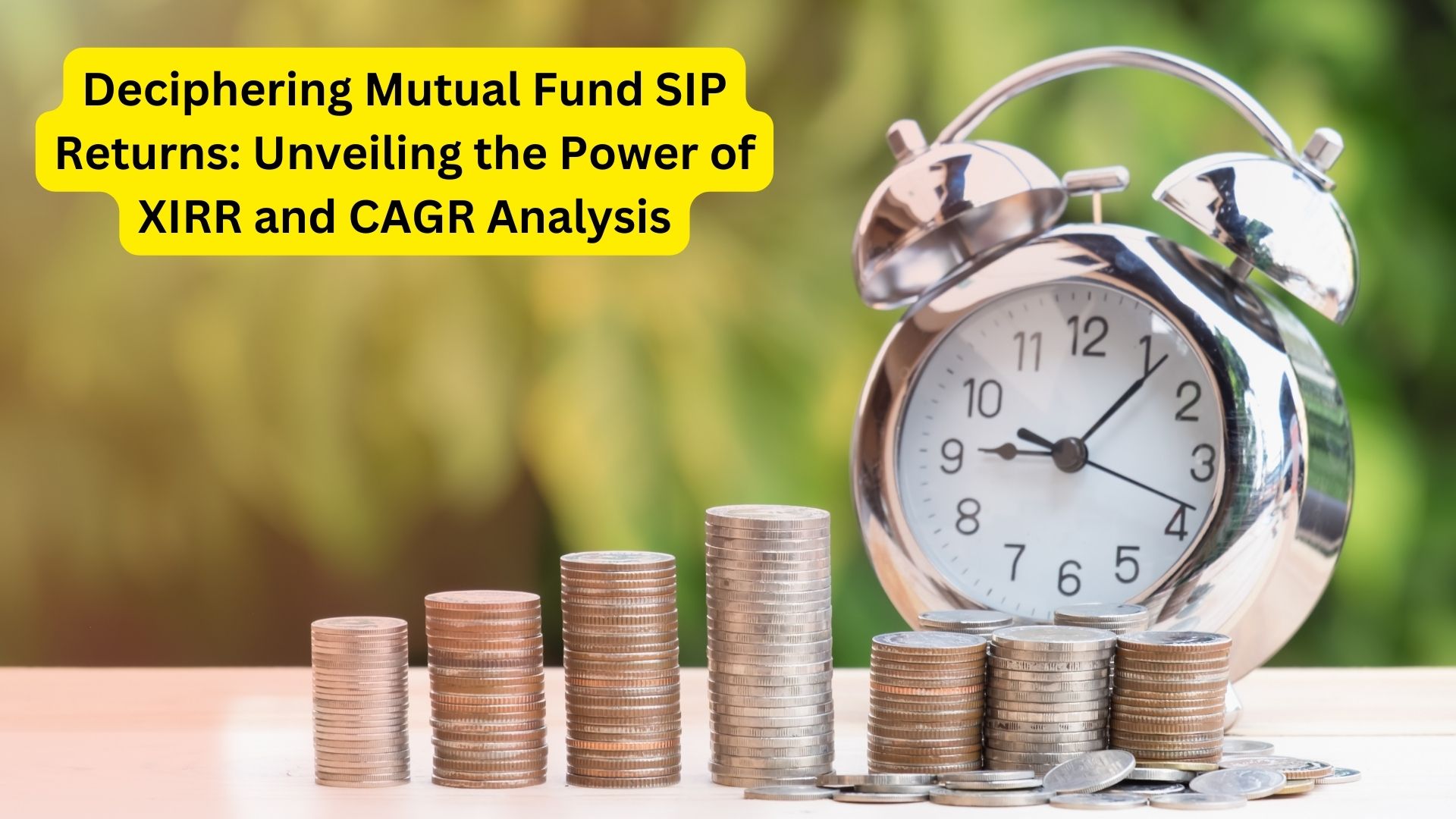
For individuals entering the world of mutual fund investments and Systematic Investment Plans (SIPs), the task of monitoring returns can appear initially intimidating. However, fear not, as we’re here to clarify two critical concepts that can assist you in navigating this financial realm: Compound Annual Growth Rate (CAGR) and Extended Internal Rate of Return (XIRR).
What Is CAGR in Mutual Funds?
CAGR, an abbreviation for Compound Annual Growth Rate, acts as a guiding light, revealing the annual growth rate of your investments over a specific time frame. Consider it as a means to determine the average yearly growth of an investment, akin to tending to a plant for five years.
The formula for calculating CAGR is as follows: CAGR = ((EV/BV)^(1/n)) – 1
Here, “EV” represents the ending value of your investment, “BV” signifies the beginning value of your investment, and ‘n’ denotes the number of years over which your investment has endured.
To illustrate, suppose you invest Rs 5,000 in a mutual fund, and the CAGR over five years is 10 percent. This indicates that, on average, your investment has been growing by 10 percent each year. It’s important to note that actual growth may fluctuate in different years; for example, in the first year, it might be 13 percent, and in the second year, 7 percent, and so on. CAGR provides a consistent growth rate that aids in comparing various funds.
How Does XIRR Differ from CAGR?
XIRR, or Extended Internal Rate of Return, is a more intricate metric that takes into account the timing of investments, offering a more precise return rate. For those engaged in Systematic Investment Plans (SIPs), where investments occur at regular intervals, the timing of these contributions significantly impacts the portfolio’s performance. In such scenarios, XIRR is the preferred metric for calculating returns and evaluating overall performance.
Nehal Mota explains that investors can conveniently calculate XIRR using Microsoft Excel and the XIRR function:
=XIRR(Values, Dates, [guess])
In this context, “Values” represents the amount invested, and it’s essential to note that investment amounts should be expressed as negative values since they are outflows. “Dates” encompass the dates of your investments and redemptions, if applicable, while “Guess” is an optional parameter used for estimating the IRR, which is typically left blank.
Also Read
Mutual Fund SIP: Meaning, SIP and Lumpsum Calculator
In summary, while CAGR is primarily employed to calculate returns on lump sum investments, XIRR excels in evaluating the performance of SIPs. These two metrics, CAGR and XIRR, equip you with valuable tools to make informed investment decisions and understand the growth of your financial assets.

One thought on “Deciphering Mutual Fund SIP Returns: Unveiling the Power of XIRR and CAGR Analysis”